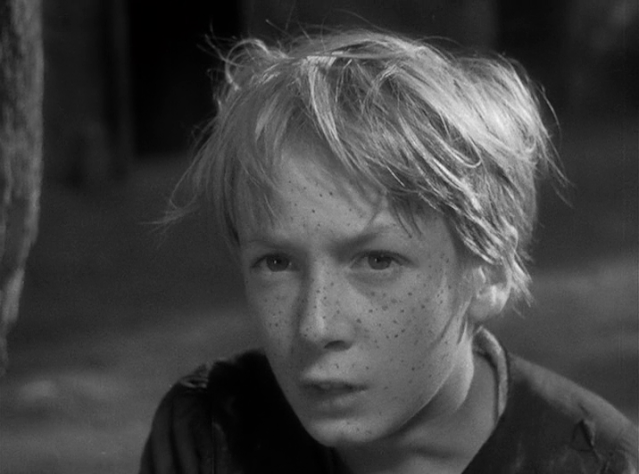Poil de Carotte (1932)
Julien Duvivier's "Poil de Carotte"
I began watching Julien Duvivier's 1932 film "Poil de Carotte" last night and noticed that my wife and daughter started to become intrigued. The film tells the story of a young boy whom everyone refers to as 'Poil de Carotte' or "Carrot-top" in English. Poil de Carotte is physically and psychologically abused by his mother while his father remains oblivious and perhaps uncaring. Eventually, with the help of a new maid, the father begins to realize the levels to which Poil de Carotte is being abused by his wife.
The tragic sadness of this child is palpable, as he even tries to commit suicide at various points in the film. Poil de Carotte is just like any boy: he loves to play, be silly, and is scared of the dark. The universal qualities of his behavior form a connection to the audience, which only makes his abuse even more troubling. Eventually, my wife and daughter got up and left to do their own respective tasks, but the abuse of this little French boy was so compelling that it caused full attention for just a moment.
I found the film to be quite good, albeit simple. However, I was very much struck by the direction of Julien Vuvivier. It was nothing fancy, by any means. But, he was able to do little things here and there that made the visual images of the film very engaging. There are little moments where he rotates the camera, rather than cutting to another area of the house. I felt that this created such a coherent environment for the audience to view. It created such a visual space. Duvivier also has some great superimposition effects, notably two. There is one point where Poil de Carotte goes outside at night and his haunted by ghosts (in his mind). Duvivier superimposes a ring of white-sheet figures encircling the poor boy, thereby creating a subjective rendering of the boy's fear. Another instance is when Poil de Carotte is asleep. A superimposed image of his body rises from his slumber and begins talking to another superimposed version of himself on the other side of the bed. Again, Duvivier really puts you in the psychological headspace of this boy and creates such an engaging visual image to take this simple story up a notch.
Overall, I was very engaged with the film from beginning to end. Duvivier's style grabbed my attention and I look forward to seeing more of his films down the road. As for Poil de Carotte, the boy, I wish him luck with his mother and am grateful that his father was finally able to reconcile with him and create a new, safe relationship with him.




Comments
Post a Comment